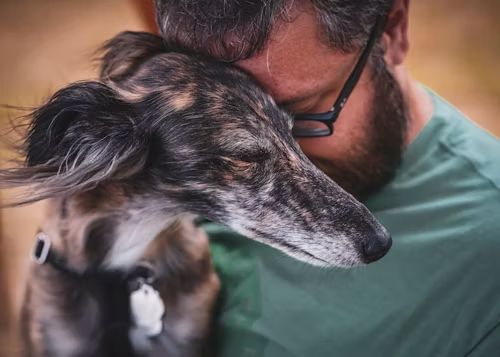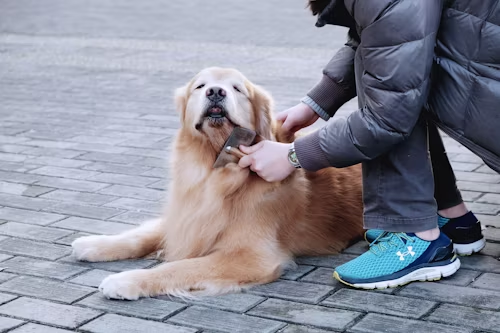Choosing the right dog can be exciting but also overwhelming. With hundreds of breeds available, many new pet owners ask, “What is the easiest dog to take care of?”
The truth is, there’s no single answer. Every dog has its own personality, habits, and needs. However, some breeds are easier to manage because they are less demanding in grooming, exercise, and training.
This guide explain what makes a dog “easy to take care of,” lists the top low-maintenance breeds, and offers practical care tips. Whether you live in an apartment, have a busy work schedule, or are adopting your first dog, this article will help you make an informed and loving choice.
What Makes a Dog Easy to Take Care Of?
Before choosing a breed, it’s important to understand what easy to care for really means. Several factors play a role.
1. Grooming Needs
Some dogs need regular trips to the groomer, daily brushing, and special care to keep their coats clean and shiny. Others, like short-haired breeds, are much simpler to maintain; a quick brush once a week and an occasional bath will do. If your schedule is tight or you prefer a dog that doesn’t shed all over the house, choosing a breed with low grooming needs will make life a lot easier.
2. Exercise Requirements
Every dog needs some form of exercise, but the amount varies a lot by breed. High-energy dogs, such as Border Collies or Huskies, love long walks and active playtime. In contrast, low-energy breeds like French Bulldogs or Pugs are perfectly content with short daily walks and some indoor play.
If you’re someone who enjoys a relaxed lifestyle or lives in an apartment, a dog with modest exercise needs will fit in perfectly.
3. Trainability
Some dogs are naturally eager to please, which makes training them a breeze. They catch on quickly, respond well to treats and praise, and enjoy learning new things. Others can be more stubborn and require extra patience and consistency.
If you’re a first-time dog owner, it’s usually best to look for a breed known for being intelligent and cooperative; it’ll make things like house training and basic commands much easier to master.
4. Health and Lifespan
A big part of caring for a dog comes down to keeping them healthy. Some breeds are prone to certain health conditions that may require frequent vet visits or special diets. Choosing a breed with a reputation for good overall health can help you avoid unexpected medical costs and heartache down the road.
A generally healthy dog not only saves you time and stress but also gives you more happy years together.
5. Temperament
A dog’s temperament plays a huge role in how easy they are to live with. Calm, gentle dogs that adapt well to different situations are often the most low-maintenance companions. They don’t bark excessively, handle guests politely, and get along well with kids and other pets.
If you want a peaceful household, look for a breed that’s known for being friendly, patient, and even-tempered. A good temperament makes everyday life with your dog smoother and much more enjoyable.
Top 10 Easiest Dogs to Take Care Of
Below is a comparison table of ten popular, low-maintenance dog breeds.
| Breed | Why They’re Easy | Best For | Care Tips |
|---|---|---|---|
| 1. French Bulldog | Small, quiet, minimal exercise needs, affectionate. | Apartment dwellers, busy owners. | Keep them cool; short snouts make them prone to overheating. |
| 2. Chihuahua | Tiny size, minimal grooming, low food needs. | Singles or couples in small homes. | Handle gently; they’re fragile around children. |
| 3. Beagle | Friendly, adaptable, short coat, cheerful. | Families or first-time dog owners. | Keep leashed; they love to explore scents. |
| 4. Greyhound | Calm, gentle, needs short walks, very quiet. | People with calm lifestyles. | Provide a soft bed and warmth in cold weather. |
| 5. Boston Terrier | Intelligent, sociable, low-shedding, compact. | Families or city dwellers. | Clean facial folds to prevent irritation. |
| 6. Dachshund | Playful, loyal, small size, moderate energy. | Apartment or small-home living. | Avoid jumping off furniture to protect the back. |
| 7. Pug | Affectionate, adaptable, low exercise needs. | Families, seniors, home-based workers. | Watch diet; prone to weight gain. |
| 8. Shih Tzu | Calm, loving, enjoys companionship, gentle. | Seniors or anyone wanting a lap dog. | Brush coat regularly to prevent tangling. |
| 9. Labrador Retriever | Friendly, intelligent, trainable, short coat. | Active families or new dog owners. | Provide daily walks and control food portions. |
| 10. Maltese | Small, affectionate, low-shedding, adaptable. | People seeking a gentle companion. | Brush coat regularly to keep it clean and healthy. |
Tips for Taking Care of Any Dog the Easy Way
Even low-maintenance dogs need regular care. Follow these simple steps to keep your pet healthy and happy:
- Feed a balanced diet suited to your dog’s size and age.
- Schedule regular veterinary visits.
- Use positive reinforcement when training.
- Provide toys and mental stimulation.
- Socialize your dog gradually with other pets and people.
- Keep a consistent daily routine.
- Maintain grooming habits like brushing, ear cleaning, and nail trimming.
Common Mistakes to Avoid When Choosing a Low-Maintenance Dog
- Choosing based solely on appearance.
- Assuming low-maintenance means “no work.”
- Neglecting exercise and training.
- Ignoring regular vet visits.
- Overlooking how your schedule fits the dog’s needs.
Large vs. Small Dogs: Which Are Easier to Care For?

Small dogs are usually easier for apartment living, need less food, and are easier to carry or bathe. However, they can be more sensitive.
Large dogs often have calmer temperaments and enjoy relaxing but need more space and exercise. The best choice depends on your living situation and lifestyle.
Mixed Breeds: An Overlooked Option
Mixed-breed dogs, often available in shelters, can make wonderful pets. They often combine the best traits of their parent breeds and may be less prone to genetic health issues. Adopting a mixed breed gives a loving dog a second chance while offering you a loyal, low-maintenance companion.


